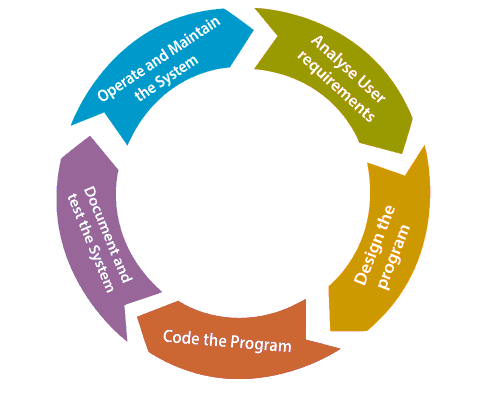The software development cycle agiledevelopment cycle is a crucial process encompassing the various stages of creating software. Traditional methods often faced challenges in meeting changing client requirements and maintaining efficiency. However, the Agile methodology emerged as a game-changer, revolutionizing the software development cycle agile development cycle. This article explores the transformative impact of Agile methodology on the software development cycle agile development cycle, highlighting its benefits and key principles.
Table of Contents
Understanding Agile Methodology

Agile methodology is an iterative and collaborative approach that emphasizes adaptability and customer satisfaction. Unlike traditional waterfall models, Agile divides the software development cycle agile development cycle into incremental and manageable phases. Each phase, called a sprint, involves planning, designing, coding, testing, and reviewing. Frequent client interactions enable continuous feedback, making Agile highly responsive to changing needs.
Enhancing Flexibility and Adaptability
One of the core strengths of Agile methodology is its ability to accommodate changing requirements throughout the software development cycle agile development cycle. By breaking the development process into iterations, Agile allows for frequent reassessment and adaptation. This flexibility ensures that software development cycle agileprojects can quickly respond to emerging challenges, technology advancements, and evolving user needs.
Customer Collaboration and Feedback

Agile methodology places a strong emphasis on involving customers throughout the software development cycle agile development cycle. Continuous collaboration and feedback enable developers to align their work with client expectations effectively. Regular client engagement helps identify potential improvements and ensures that the software development cycle agile aligns closely with the customer’s vision.
Iterative Development Process

The iterative nature of Agile methodology contributes to its effectiveness in transforming the software development cycle agile development cycle. Each iteration, or sprint, consists of a short development cycle where features are built, tested, and reviewed. This iterative approach allows for continuous improvement, early error detection, and more efficient project management.
Prioritizing Incremental Value Delivery
Agile methodology promotes delivering software development cycle agilein small, functional increments. By prioritizing features based on their value to the customer, developers can provide tangible benefits early in the software development cycle agile development cycle. This approach allows clients to assess the product’s value, provide feedback, and make informed decisions, resulting in higher customer satisfaction.
Empowered Development Teams
Agile methodology empowers development teams by fostering self-organization and accountability. The software development cycle agile development cycle becomes a collaborative effort, with team members taking ownership of their tasks. This autonomy enhances motivation, creativity, and collaboration among team members, resulting in higher-quality deliverables.
Continuous Integration and Testing
Agile methodology promotes continuous integration and testing throughout the software development cycle agile development cycle. Frequent integration of code ensures early identification and resolution of conflicts and issues. Similarly, continuous testing helps detect and rectify defects promptly, leading to a more stable and reliable software development cycle agile product.
Transparency and Visibility
Agile methodology emphasizes transparency and visibility throughout the software development cycle agile development cycle. By using visual management tools like Kanban boards or Scrum boards, team members and stakeholders have a clear understanding of project progress, bottlenecks, and potential risks. This transparency enables effective communication and facilitates informed decision-making.
Continuous Improvement and Adaptation
The agile methodology encourages a culture of continuous improvement. Retrospectives at the end of each sprint enable teams to reflect on their work, identify areas for enhancement, and implement changes accordingly. This iterative process of reflection and adaptation promotes a learning environment and fosters innovation within the software development cycle agile development cycle.
Conclusion
Agile methodology has transformed the software-development cycle agile development cycle by providing a flexible, collaborative, and customer-centric approach. Its emphasis on adaptability, frequent customer feedback, and iterative development enables software-development cycle agile teams to create high-quality products that align closely with client requirements. By empowering development teams, promoting transparency, and encouraging continuous improvement, Agile methodology revolutionizes software-development cycle agile development, leading to enhanced efficiency, customer satisfaction, and successful project outcomes.
Learn about: Unleash the Power of Connectivity with the Ultimate Free Online Webinar Software Solution
